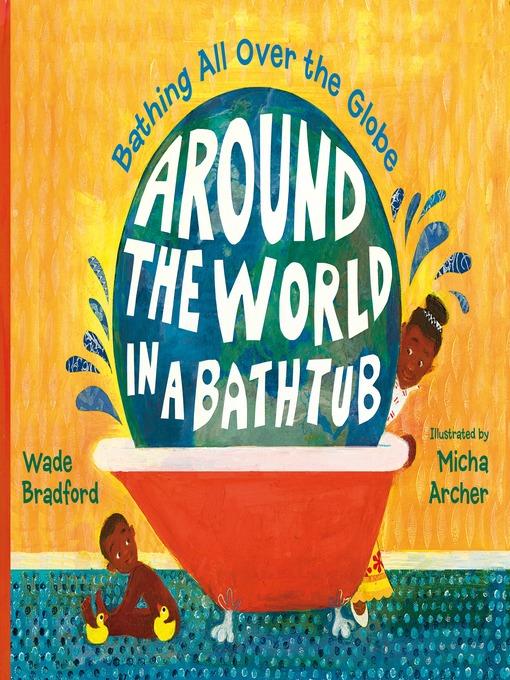
Around the World in a Bathtub
Bathing All Over the Globe
کتاب های مرتبط
- اطلاعات
- نقد و بررسی
- دیدگاه کاربران
نقد و بررسی

May 1, 2017
Is it a universal truth that kids don't like baths?Maybe yes, maybe no. Children may not like the bathing experience at first, but they often don't want it to end. By home bathtubs, communal baths, lakes, rivers, and even a mud volcano, cajoling adults say, "Yes, yes," while unwilling children shout, "No, no!" These words, in many languages (in English transliteration) and their phonetic pronunciations (in a smaller font), are woven into the illustrations (and so are not always easily read). Exuberant illustrations, emphasizing aqueous blues and greens, are executed in oils with collage elements and finished in Photoshop. The unclothed young children and more modestly covered adults have different skin and hair colors, but the book starts in an unnamed country (the U.S.?) with a loving, brown-skinned mom summoning her reluctant child to an old-fashioned bathtub. The same adorable boy doesn't want to leave the tub at the end and splashes his mom, who then cuddles him reassuringly in a towel. In between these familiar domestic scenes, a Japanese family lines up to use the ofuro, a square wooden tub; Turkish siblings go to the hammann, a beautifully decorated bathhouse; an Indian dad and his little boy go to the Ganges to "honor their ancestors"; and an Alaskan Yup'ik family visits a maquii for a traditional sweat bath. Although there is no map, there are lively explanatory notes. Instructive on several levels--and good, wet fun! (Informational picture book. 4-7)
COPYRIGHT(2017) Kirkus Reviews, ALL RIGHTS RESERVED.

May 1, 2017
PreS-Gr 2-While some youngsters take to bath time like fish to water, others struggle with the ritual and need a bit of encouragement and coaxing. This appealing and enlightening nonfiction picture book serves as a resource for universalizing the bath time experience and making connections among different cultures around the world through descriptions of their specific bathing traditions. The work starts with a young boy refusing to get into the tub and proceeds to discuss, through spare, lyrical text, how children from all over the globe sometimes resist bathing. Archer's bold, bright oil paint and collage art depicts each custom with engaging detail. For each spread, there is also a translation of how to say "no, no" and "yes, yes" in the corresponding language, which will make for a fun, educational read-aloud experience. A list of people who shared their expertise is included in the acknowledgements, which points to careful research, and a "Bathing Around the Globe" section at the end provides a bit more content about each bathing tradition and may spark conversation and inspire readers to seek out more material. VERDICT This geography book with a twist will be useful for read-alouds and for home use.-Rita Meade, Brooklyn Public Library
Copyright 2017 School Library Journal, LLC Used with permission.

May 15, 2017
Preschool-G Bradford's picture book makes a splash with its lighthearted, global perspective on the ritual of bathing. No, no! squeal the children; Yes, yes, insist the adults in English, Japanese, Hindi, and a sprinkling of other languages. In some homes, it's not uncommon for nightly ablutions to begin with mama chasing her little one around the house, and end with a happy splash. In some parts of the world, there is a more collective ritual. In Japan, family members bathe in order of age in a large square tub called an oforu. In India, bathing in the Ganges River is an act of honoring ancestors. Turkish baths include scrubbing and mud masks, while in Alaska, a Yup'ik family gathers in a maqii to enjoy (or not) a steam sauna heated by fire and stones. The illustrations are vivid, textured, and energetic, and affectionately reminiscent of Ezra Jack Keats' The Snowy Day (1962). Parents and children will enjoy incorporating the linguistic variations into their own bath-time practices.(Reprinted with permission of Booklist, copyright 2017, American Library Association.)

























دیدگاه کاربران